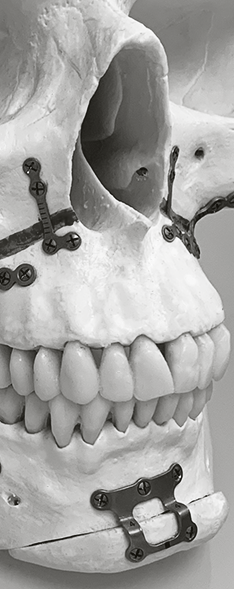
Dento-facial deformity
The management of corrective jaw surgery has a comprehensive multidisciplinary approach.
Dentofacial deformities are common in the general population, ranging from mild discrepancies of the teeth and jaw to significant facial deformities associated with syndromes of the face and skull.
A multidisciplinary approach to manage these conditions is necessary to optimise outcomes and the same care and attention to detail is extended to all patients from the mildest to the most significant deformity.
Patients often present to O&M because they are concerned about their own appearance, or they are referred by their orthodontist because of concerns regarding their occlusion or bite. The main goal of treatment is to provide a satisfied patient. The surgical goals are to provide a stable occlusion and improve function, in particular breathing and chewing.
The multidisciplinary team includes surgeon, orthodontist, ENT, speech therapist, social worker and psychologist.
An initial planning meeting is arranged in which the patient, orthodontist and surgeon meet to discuss the treatment options. Available are special investigations such as photography, dental models, x-ray’s and cephalometric measurements to aid in this process.
Corrective jaw surgery is based on a staged treatment plan.
- Orthodontics is commenced to align and decompensate arches and at the same time dental extractions and exposure of unerupted teeth can be managed.
- Orthognathic surgery which includes correction of jaw discrepancy and associated grafting to the cheeks can occur at this time.
- Post-surgical orthodontics
- Retention phase
- Soft tissue procedures for example rhinoplasty and genioplasty at the patients request.
Management of dentofacial deformity is patient centred. The multidisciplinary approach to patient care aims to minimise less than ideal outcomes and maximise positive outcomes. Planning is the most important part of the management process.
